Apple iPad (Review)

What’s in the iPad?
The iPad is essentially a large iPod Touch, but some would argue that the iPod Touch is a small iPad. Both devices share many characteristics including having the same iPhone OS, WiFi, Bluetooth, a capacitive touch screen display, built-in accelerometers, light sensors, a headphone jack, a dock connector, and volume controls. Both devices are also offered in 32GB and 64GB storage capacities. It’s similar, but there’s a big difference: the iPad sports a 9.7-inch 1024-by-768 pixel display versus the 3.5-inch 320-by-480 pixel display on the iPod Touch. In addition, the iPad packs a vastly superior battery that offers 10 hours of runtime, WiFi 802.11n for fast downloads, and a proprietary 1Ghz Apple A4 processor. It doesn’t sound too innovative, and that’s because it isn’t. That being said, it does manage to overcome some of the hardware restrictions of the iPod Touch and iPhone which opens the doors to more possibilities.
Taking a look back at 2007, the iPhone’s multi-touch capabilities were fascinating. Today, the iPad expands on that experience. It’s hard to comprehend the full potential and personal gratification of the new display until you try using one. While the tiny iPod Touch display often feels constrained, the iPad lifts those boundaries. Sliding through windows, pinching to zoom in and out, twisting two fingers to rotate pages, and flicking to scroll is incredibly easy and entertaining. Plus, with a bright LED backlit IPS-powered display, everything looks stunning. Colors are rich, blacks are dark, images are clear, and text is crisp. The extraordinary viewing angles offers the same quality experience from any side. I’ve used various tablets over the years, but none can compare to iPad’s responsiveness and sensitivity.
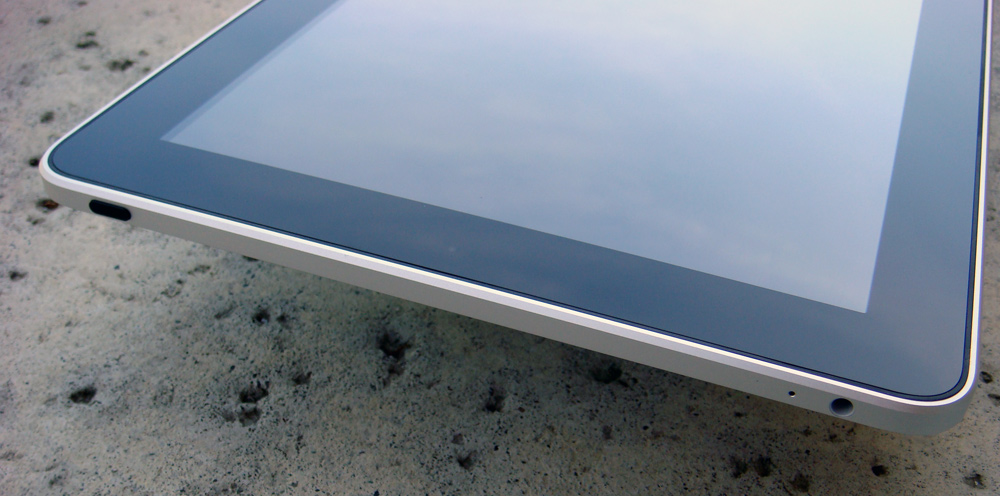
What does it replace?
Nothing. The iPad is a new class of “gadgetry”. There’s nothing to replace because a tablet market does not necessarily exist. The iPhone was only able to spearhead the mobile phone revolution because a market for it already existed. Sure, the iPhone was undoubtedly light years ahead of competition. It was also definitely responsible for the accelerated emergence and adoption of smartphones. However, it is hard to tell whether it would have been as successful if that market didn’t already exist. As for the iPad, the closest competitors are the JooJoo and the upcoming HP Slate, but neither have substantial recognition by the mass market.
Apple will find it difficult to tout the iPad as a netbook replacement. That’s because there’s simply no way an iPad can “do more” than a netbook. To begin with, activating an iPad actually requires pairing it to a regular Mac or PC running iTunes with the included USB cable. Although the iPad can self-update Apps on its own, upgrading to a new iPhone OS version requires a computer. Since the iPad doesn’t have an accessible file system, there’s no way to store files on the internal SSD asides from the music, photos, and videos that sync through iTunes. Even dealing with other major file formats requires 3rd party Apps. Apple fortunately offers Pages, Numbers, and Keynote for $10 each to handle word processing, spreadsheets, and presentations, respectively.
As the iPad lacks a physical keyboard, it can’t replace a laptop for getting work done anytime soon. And it shouldn’t try to do so. The device is primarily an “information viewer,” not an input device. Apple makes it easy to consume the web and manipulate visual data, but not for creating content. I should mention that Apple does offer an external keyboard which some may use, but it’s simply another expense and another item to lug around. Even with an external keyboard, the iPad’s software limitations won’t help getting anymore work done. That being said, I should at least give Apple credit for designing one of the best virtual keyboards to date. The touch screen input interface is the best on the market, however it still can’t replace physical keyboards.
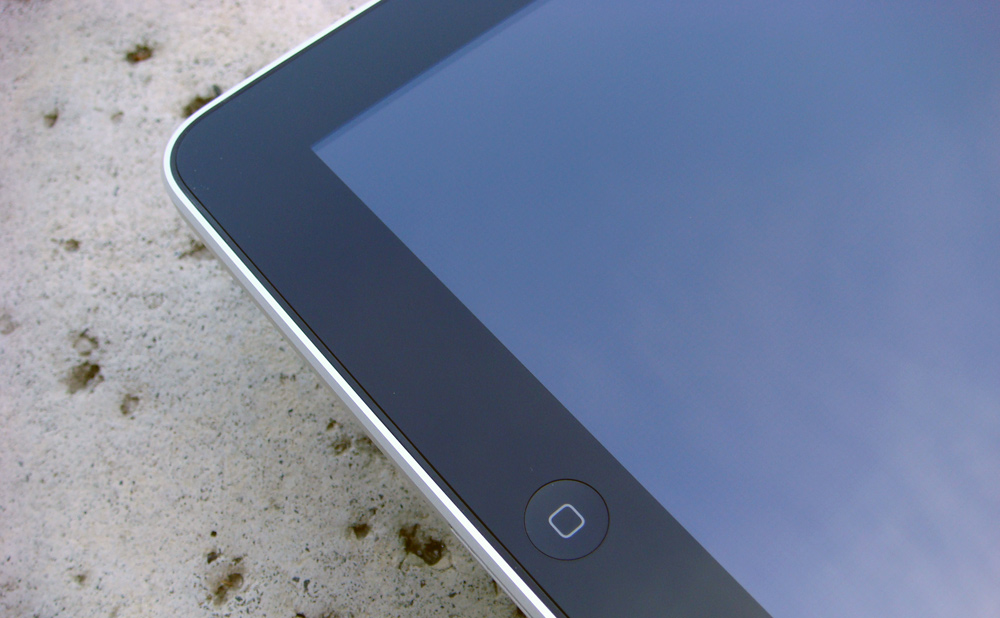
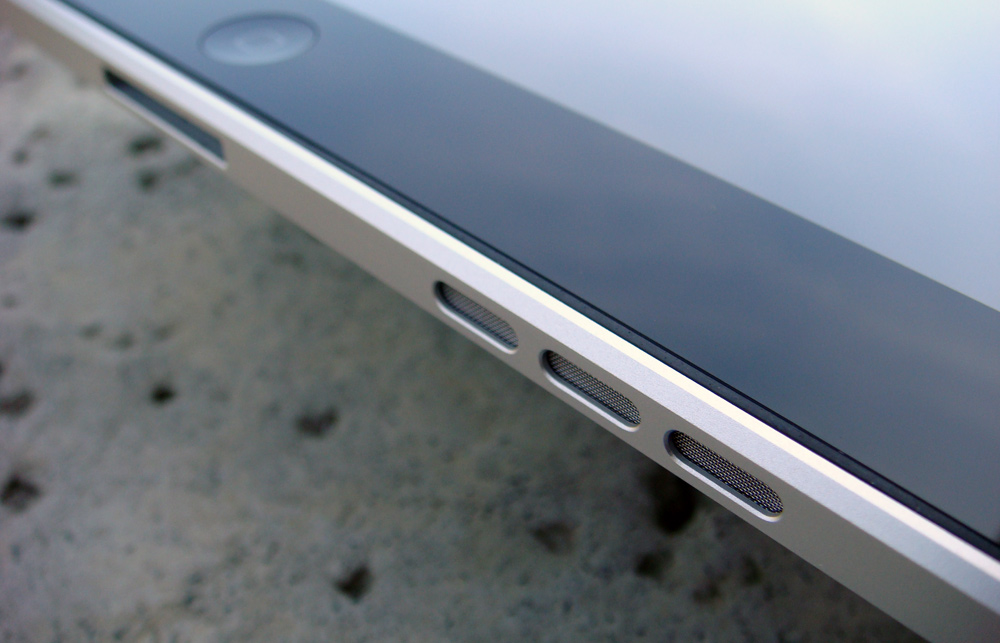
What are some issues?
While the iPad’s finish and polish are phenomenal, there are countless underlying issues. Let’s start with the basics, without USB ports, it can’t connect to the millions of accessories on the market. The most of important of which include flash drives, external hard drives, and possibly even printers. Without an internal multi-card-reader, there’s no way to take advantage of expandable storage or to access images from a digital camera. (Apple offers an optional Camera adapter.) Even with cloud-computing advancements that make files available through the web with services such as DropBox, those still aren’t widely adopted and won’t work without an internet connection.
With a device that starts at $500, I expected quick syncing. Unfortunately, just like an iPhone, syncing about 16GB easily takes over an hour. It’s unbearably frustrating and time-consuming. It was further annoying to find that my two-year old Dell XPS M1530 couldn’t charge the iPad. The iPad simply demands more power than other devices to recharge. Apple’s documentation states that the iPad will still recharge with an older USB port even if the screen doesn’t relay that information. However, it’s expected to take a few times longer. The iPad’s new 10W charger is twice as fast as the charging cube included with the iPhone 3GS.
The issues don’t just end there. Let’s take the web browser for instance. While it’s the best touch screen browser I’ve used, it still lacks extensibility. Popular plugins including Flash, Java Runtime, and Silverlight aren’t supported. It’s hard to fully experience the web without those plugins. Popular services such as Netflix and YouTube offer dedicated Apps to circumvent the limitations, but parts of the web are left unusable. While it’s a good thing that Apple is focusing on HTML5 which is likely the future, they should still offer some backwards compatibility since the majority of websites aren’t there yet. Asides from that, most web pages still rendered quickly without any issues.
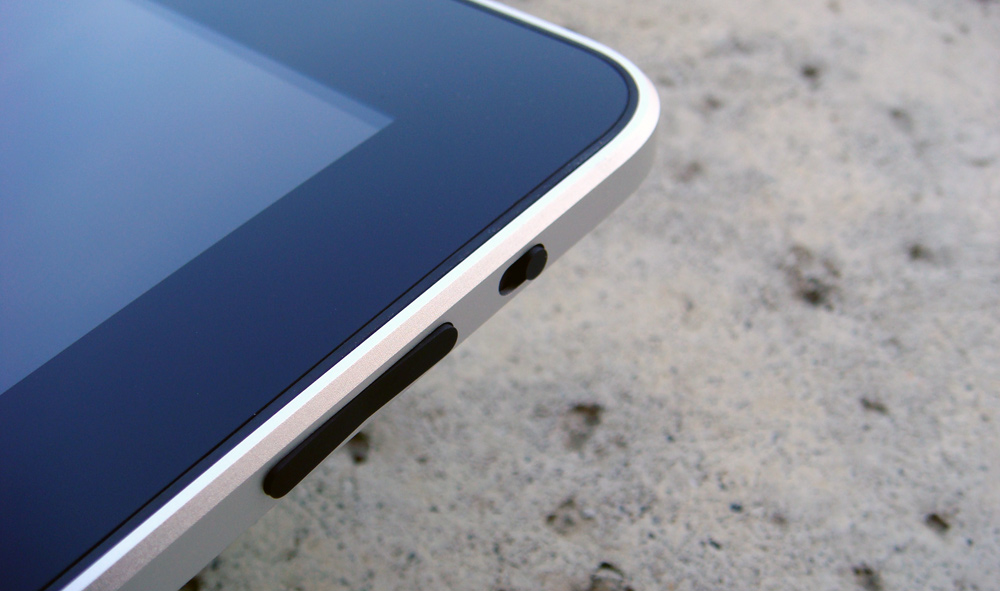
Is it better than tablet PCs?
For the most part, no. The iPad’s capacitive touch screen technology doesn’t support handwriting recognition. Taking notes by drawing with a finger isn’t practical. Tablet PCs generally have resistive touch screens that are excellent for sketching with pens. While the iPad is great for browsing information, it struggles to allow creating documents. It’s irresponsible to even compare an iPad with a Tablet PC. The two devices do not compare.
If you still need convincing, take this scenario for instance. I had to make a few small edits to a Word Document I typed on my computer. I began by emailing the file to myself to bring it up on the iPad’s Mail App. Since the iPhone’s OS doesn’t allow editing or saving attachments, I had to copy and paste the text into the Notes App. After making a few changes, I realized that I had entirely lost the formatting in the process. Since the iPad doesn’t allow uploading documents through a web form or printing, I had to email it to myself again and head back to a real computer to get the job done.
Without a fully function operating system that supports multitasking, it’s quite difficult to do real work. Trying to reference another email, web page, or document would entail having to close the current application. I can’t reiterate enough that the iPad isn’t for creating content. That being said, the user interface generally found on a Tablet PC isn’t finger friendly. Even though Windows 7 had improved touch support, it’s still not nearly as intuitive as an iPad. But since a Tablet PC has a touchpad, a keyboard, Ethernet, VGA output, USB ports, and memory card readers, it can do just about everything else.
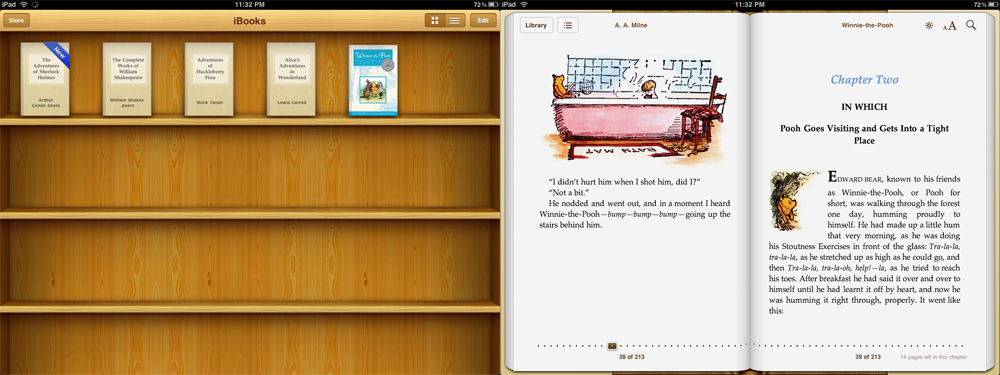
Better than eBook readers?
Yes, but it’s a major distraction. I thought I would be reading books on my iPad when I first bought it, but I almost never did. The majority of my reading consisted of fresh content from The New York Times, USA Today, or NPR. I also spent plenty of time browsing through RSS feeds through Google Reader. Books just felt too outdated and old fashion for the iPad. However if you are a serious about reading books, there are a few pros and cons worth noting.
Starting with the issues, let’s focus on the display. While it looks gorgeous for browsing photos and watching videos, it’s harsh on the eyes after several extended hours of use. Lowering the brightness may resolve the problem for some, however the reflective mirror-like glossy screen then becomes an issue. While it’s not a problem in doors, the iPad is almost entirely unusable outdoors. Even at full brightness, the screen appears dark and recessed. Every single smudge and fingerprint becomes visible under direct sunlight. I couldn’t help but ask why Apple didn’t at least include a micro fiber cleaning cloth.
On the bright side, Apple did get some things right. The interactive feel of reading a book on an iPad is captivating. Each page turn has a smooth transition. While the eInk technology may represent print material more accurately, it’s unbearably boring. eInk might also be easier on the eyes, but with the iPad as an option on the table, I doubt people will even consider a Kindle or Nook. Browsing through a virtual wooden book shelf or searching for a word in a book is easy and quick. The interface even offers the ability to adjust the font size, bookmarking pages, or looking up words in a dictionary.
Asides from those pros and cons, the price of digital books through Amazon’s Kindle Store and Apple’s iBook Store were nearly the same for all the best sellers I cross-checked. While Amazon offers a selection reaching almost 500k, Apple only offers half the number of titles. With the price of a Kindle DX hovering at the same price as an iPad, I would simply go for the latter. The only other real advantage the Kindle offers is a longer battery life.
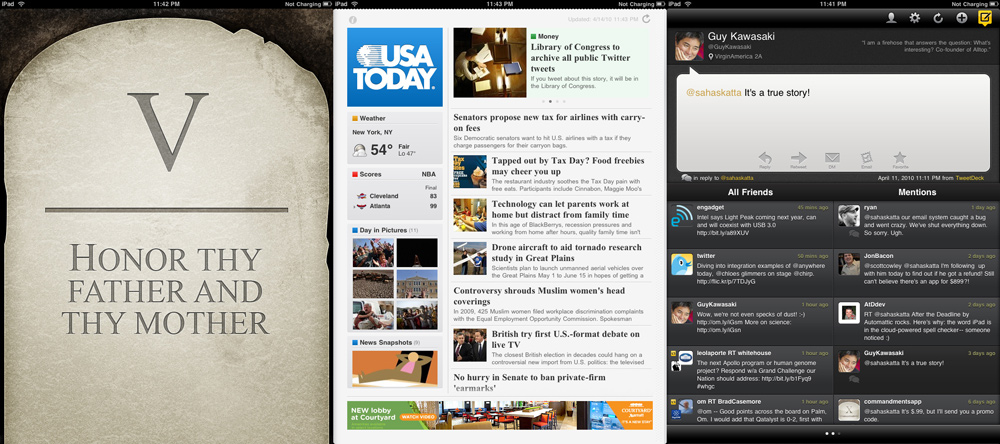
How are the Apps?
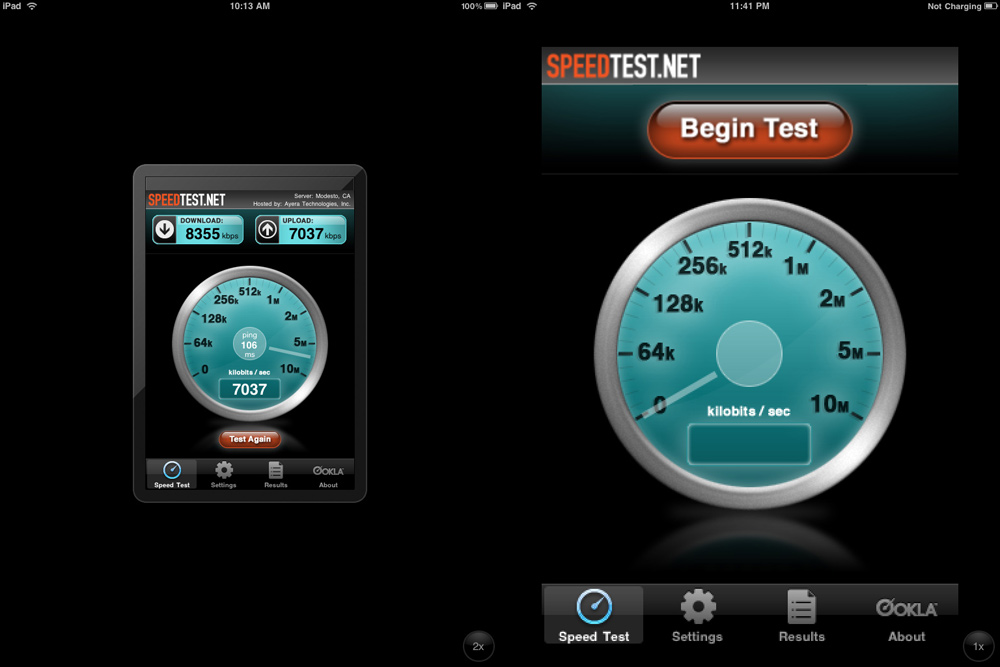
Apple made a brilliant move when they decided offer backwards compatibility for iPhone Apps. Without those, the iPad App store would have been empty. At launch, there were nearly 200,000 iPhone Apps available excluding a few that may have required a camera or GPS to work. While that may sound great, those iPhone-optimized Apps are visually unpleasing on the iPad’s large display. They appear in native resolution in the center of the display surrounded by large black border. There’s a “2x” button to enlarge the App, however it’s blurry and messy.
Fortunately, when it comes to native iPad Apps, it’s an entirely new story. Premium Apps such as Netflix, ABC, Pandora, AIM, and many others take advantage of the entire screen estate. Unfortunately, there aren’t too many of those available just yet. The selection iPad-optimized Apps are still quite limited. Small-time developers probably find it hard to justify dedicating time and resources for a new device with a limited audience. As time passes, if the Apple continues to show promising sales figures on the iPad, more developers will begin rushing quality iPad Apps into the submission process.
While I did mention that iPhone Apps appear blurry, I figured that I shouldn’t complain. Just imagine, if Apple hadn’t offered backwards compatibility, pundits would have been having a field day complaining. Either move has a “no-win” situation for Apple, but I strongly feel they made the right decision.
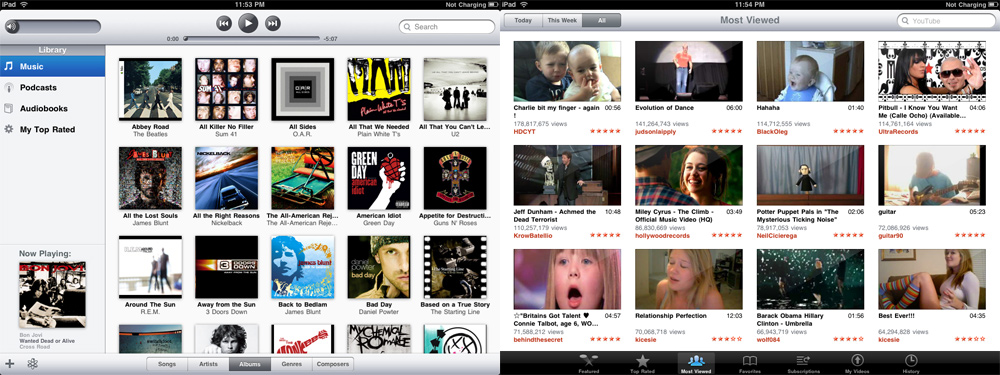
Is it good for multimedia?
When it comes to entertainment, there’s nothing that can beat the iPad. While the device’s hardware may derive its roots from the iPod Touch, it’s clear that Apple actually used iTunes for inspiration. The interface rather closely resembles a slimmed down version of the desktop client versus a mobile interface. It’s easy to browse through Music by Songs, Artists, Albums, Genres, and Composers. Since there’s plenty of screen estate, more information appears on-screen at a time including the song durations, the number of tracks in an album, artwork, and more. There’s also a convenient search tool, shuffle/repeat modes, and even a genius playlist.
The Video App is a separate entity from the iPod App. (iPhone merges both features.) Browsing through a collection of videos and podcasts is easy with large thumbnails. While Apple simply states ‘HD’ playback everywhere, it’s actually just 720p, not the full 1080p experience. Codecs are unfortunately somewhat limited as with most Apple devices. There are many free tools that can convert just about any video into a supported format, but that still is a hassle as encoding takes time. I interestingly found that some podcasts delivered directly from iTunes weren’t actually compatible. Despite that, the excellent display and battery life make the iPad an excellent video playback device.
As for photos, Apple really hasn’t made much progress. Launching the App displays all the photos on the device in a single stream, but also offers sorting by Albums. Unfortunately, since Apple doesn’t offer folder structure support, finding images amongst a large collection of photos is a difficult task. The only other related innovation is the improved slideshow feature. There’s even a button to launch it from the lock screen. As usual, there are a handful of neat animations. The entire experience is fairly solid, but that doesn’t mean there isn’t room for improvement.
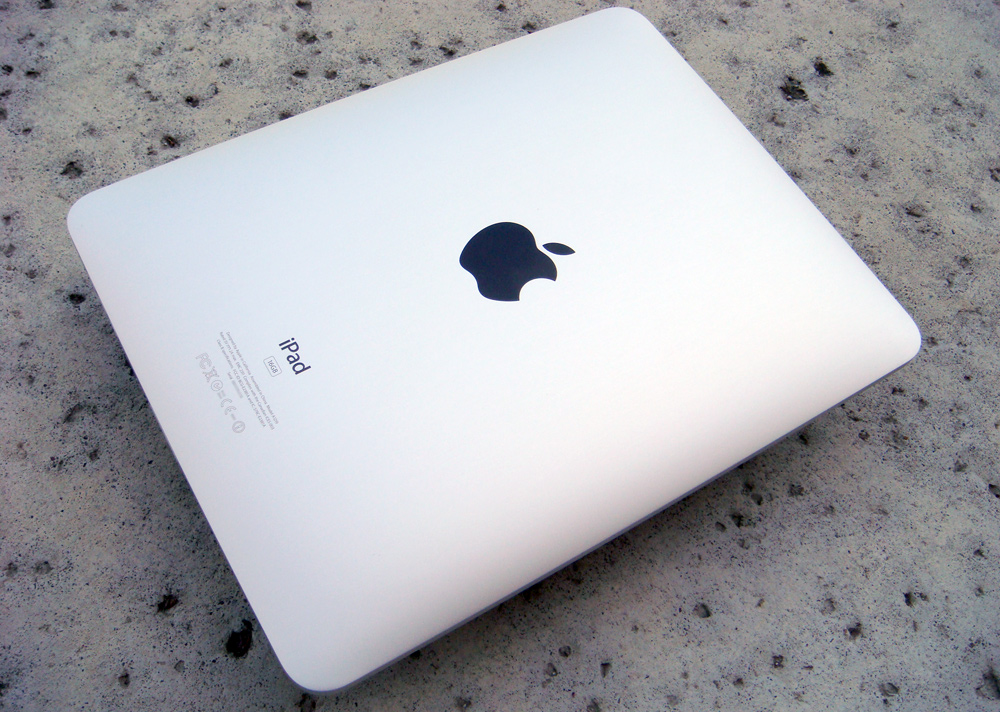
How long does the battery life last?
If there’s one thing that Apple did right with the iPad, it was outfitting it with a powerful battery pack. According to Apple’s claims, the battery should provide power for about 10 hours when surfing the web with WiFi, watching a video, or listening to music. Naturally, I put it to the test and found that their numbers were actually underestimates of my results. For instance, on my first day with the device, the iPad managed last from about 8AM to midnight with 25% battery to spare. That day included heavy usage since I was customizing settings, listening to music, observing video quality, and download new Apps. Not to mention that I let many people try the device throughout the day. As for most average days where I reply to emails, browse the web, check the calendar, and read the news, I drain less than 20%. With excellent standby savings, the iPad can retain power for nearly a few weeks at a time when not in use.
That’s quite impressive considering that my iPhone 3GS runs dry about half way through the day even with minimal use. Most new netbooks only began reaching the 10 hour mark this year with a 6-cell battery. However even those require charging daily. The iPad can easily go for a few days at a time with minimal use. It’s also only a matter of time before 3rd parties begin offering cases with extended batteries that will only further extend the lifespan.
The Bottom Line
As a computer geek, it’s truly hard to justify the price of an iPad. As the majority of Americans are still struggling through difficult economic times, it isn’t the wisest solution to grab an iPad. While the amazing simplistic design and long battery life is wonderful, there’s not much it can offer to the average person. With a locked-down operating system, a limited number of iPad-optimized Apps at this time, no multitasking until Fall, no expandable storage, no front-facing cameras, and no USB ports, it’s lacking just about everything. The $500 starting price can also buy a top of the line netbook with still $100-200 to spare. While netbooks might not have the “eye candy factor” or be as aesthetically pleasing, they do have a physical keyboard to get real work done. A netbook or laptop can do everything an iPad does, but not the other way around. If you have the cash to spare, want an easy-to-use fool-proof device, and don’t need to get office-like tasks done, the iPad won’t disappoint.
Links: Apple.com/iPad
10,0,42,34